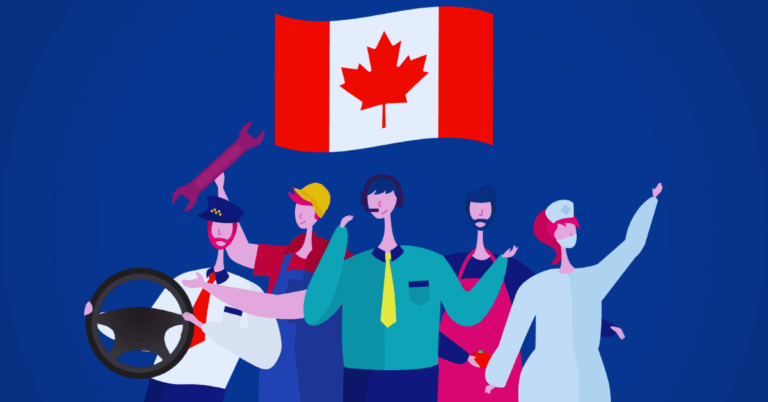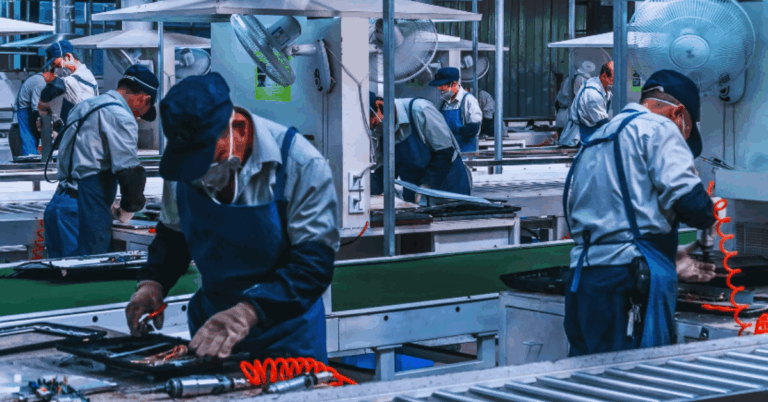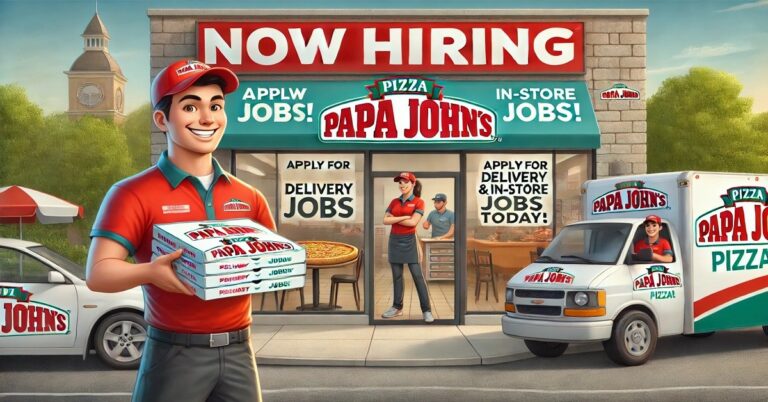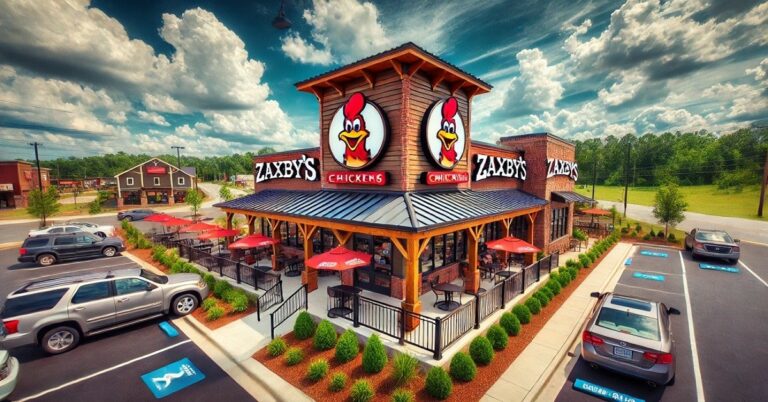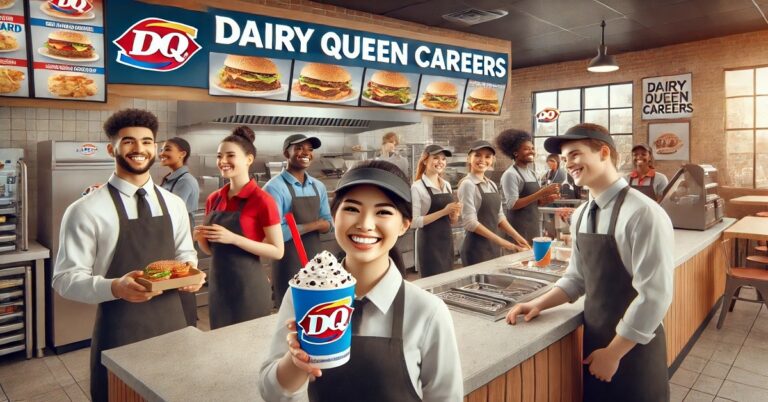In the United States, the crisp lines guiding traffic and marking parking spaces are the work of skilled line striping professionals.
Essential for safety and organization, line striping plays a crucial role in maintaining national infrastructure.
This guide explores careers in line striping, covering skills, training requirements, and diverse career opportunities in this impactful field.
What is Line Striping?
Line striping involves applying painted lines on roads, parking lots, and sports fields to mark lanes, parking spaces, and traffic directions. Its purposes include:
- Traffic Guidance: Marks lanes and traffic patterns to improve flow and reduce accidents.
- Safety Enhancement: Defines boundaries and crosswalks for pedestrian and driver safety.
- Organization and Efficiency: Maximizes space use and efficiency in public and private areas.
- Regulatory Compliance: Ensures adherence to safety and accessibility standards.
- Aesthetics: Enhances the appearance and usability of public spaces.

Different Types of Line Striping
Line striping encompasses various applications crucial in guiding and organizing traffic and spaces. Here are different types of line striping:
- Road Markings: Includes lane dividers, centerlines, edge lines, and arrows on highways and streets.
- Parking Lot Striping: Designates parking spaces, fire lanes, handicap spots, and directional arrows in parking facilities.
- Sports Field Markings: Lines for soccer fields, football fields, basketball courts, and other sports arenas to outline playing areas and boundaries.
- Airport Runway Markings: Includes runway centerlines, touchdown zones, taxiways, and hold lines for aircraft guidance and safety.
- Warehouse and Industrial Floor Markings: Markings for aisles, walkways, hazards, and equipment paths in warehouses and industrial settings.
Skills Needed for Line Striping
Successful line striping requires precision, technical knowledge, and attention to safety protocols.
Here are the essential skills needed for line striping:
- Attention to Detail: Ability to accurately measure and apply markings according to specifications.
- Technical Knowledge: Understanding of striping equipment, paints, and reflective materials.
- Safety Awareness: Adherence to safety protocols to ensure personal and public safety during striping operations.
- Physical Stamina: Endurance to work efficiently while standing and moving for extended periods.
- Problem-Solving Skills: Ability to troubleshoot equipment issues and adjust to varying conditions on-site.
Education and Training
Education and training are crucial for mastering the technical skills and safety protocols in line striping. Here’s what you need:
- High School Education: Basic math and geometry provide the foundation for understanding measurements and calculations.
- Vocational Training: Courses in vocational schools offer hands-on experience with striping equipment and materials.
- Certifications and Licenses: Obtaining OSHA safety training and state striping licenses ensures industry standard compliance and proficiency.

Career Paths in Line Striping
Exploring career paths in line striping unveils diverse opportunities in construction, entrepreneurship, and public sector roles.
Here are several paths to consider:
- Construction Companies: Employment opportunities in firms specializing in road and infrastructure projects.
- Entrepreneurship: Start your line striping business, serving commercial and residential clients.
- Public Sector Employment: Positions with municipal governments or transportation departments responsible for maintaining public roadways and parking areas.
- Facility Management: Managing line striping needs for extensive facilities like airports, shopping centers, and industrial complexes.
- Contracting and Consulting: Providing line striping services on a contract basis or as a consultant for specialized projects and developments.
Tools and Equipment Used
Effective line striping relies on specialized tools and equipment tailored to different applications.
Here’s an overview of the essential tools and equipment used:
- Striping Machines: Automated machines for precise paint application on roads, parking lots, and sports fields.
- Paints and Reflective Materials: Various types of paints and reflective materials ensure the visibility and durability of markings.
- Stencils and Templates: Tools for creating consistent and uniform markings, such as letters, numbers, and symbols.
- Measuring Devices: Instruments for accurate measurement and layout of striping patterns and dimensions.
- Safety Gear: Personal protective equipment (PPE), including high-visibility clothing, gloves, and safety goggles for operator protection.
Challenges and Rewards
Embarking on a career in line striping presents both challenges and rewarding experiences.
Here’s a breakdown of some of the key challenges and rewards:
Challenges:
- Weather Conditions: Adverse weather can hinder paint application and drying times.
- Precision Requirements: Demands for accurate measurements and alignments, especially in complex layouts.
- Equipment Maintenance: Regular upkeep of striping machines and tools to ensure operational efficiency.
- Safety Hazards: Risks associated with working in traffic environments and handling chemicals.
- Regulatory Compliance: Adhering to local, state, and federal regulations regarding safety and environmental standards.
Rewards:
- Enhanced Road Safety: Contributing to safer roadways through clear, visible markings.
- Aesthetic Improvement: Transforming spaces with professional and visually appealing line striping.
- Job Satisfaction: Seeing the tangible results of your work in well-marked roads and parking lots.
- Entrepreneurial Freedom: Opportunities to start and grow your own line striping business.
- Community Impact: Providing essential services that improve public spaces and infrastructure.

Where to Apply for Line Striping Jobs
Exploring opportunities in line striping involves considering various sectors, including online platforms that connect professionals with clients.
Here are places where you can apply your skills:
- Construction Companies: Specializing in road construction and infrastructure projects.
- Municipal Governments: Responsible for maintaining public roads, highways, and parking facilities.
- Facility Management Companies: Managing commercial properties, airports, and industrial complexes.
- Sports Facilities: Providing field marking services for sports arenas and stadiums.
- Online Platforms: Utilizing digital platforms for freelance or contract line striping opportunities, connecting with clients remotely.
Salary and Job Outlook
Understanding the salary potential and job outlook is crucial when considering a career in line striping.
Here’s an exploration of the salary ranges and job prospects in this field:
- Salary Ranges: Varied based on experience, location, and industry sector, with averages ranging from $30,000 to $60,000 annually.
- Job Outlook: Stable demand due to ongoing infrastructure maintenance and construction projects, offering opportunities for growth in both public and private sectors.
- Factors Affecting Salary: Include certifications, additional skills, and the scope of projects managed.
Environmental and Safety Considerations
Environmental and safety considerations are paramount in line striping to ensure public safety and environmental responsibility.
Here’s an overview of the key considerations:
- Environmental Impact: Using eco-friendly paints and materials to minimize the ecological footprint is significant.
- Safety Measures: Implementation of safety protocols to protect workers and the public during striping operations.
- Regulatory Compliance: Adherence to local, state, and federal environmental protection and occupational safety regulations.
- Weather Conditions: Management of weather challenges that can affect paint application and worker safety.
- Waste Management: Proper disposal and recycling of materials to reduce environmental impact.
Advanced Techniques in Line Striping
Advanced techniques in line striping go beyond basic applications, utilizing specialized methods to achieve precise and durable markings.
Here’s an exploration of some advanced techniques:
- Thermoplastic Striping: Heat is used to apply durable plastic markings, which are ideal for high-traffic areas.
- Hand Striping: Manual application for intricate designs and custom markings, offering flexibility in design and layout.
- Reflective Markings: Incorporates reflective materials for enhanced visibility during low-light conditions.
- Stencil and Template Usage: Precision tools for consistent lettering, symbols, and complex patterns.
- Epoxy Coatings: Provides long-lasting durability and resistance to harsh environmental conditions.
Wrapping It Up
In conclusion, pursuing a career in line striping offers challenges and rewards, from mastering technical skills to enhancing safer, organized environments.
Opportunities abound across the USA for those interested in construction projects, municipal roles, or entrepreneurial ventures.
Take the first step towards a rewarding career in line striping today, and make your mark in enhancing infrastructure and safety nationwide.



